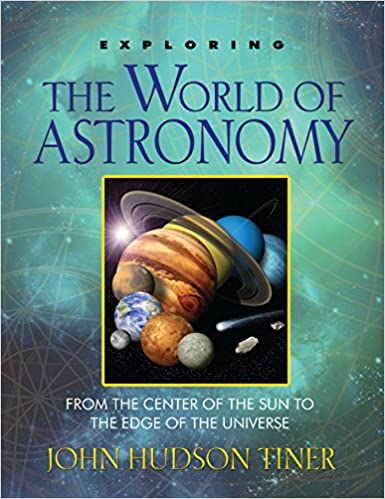I started writing this on the Friday of the May long weekend. The wildfire smoke from northern Alberta was still reducing the visibility in Calgary, but I couldn’t smell it that morning. It wasn’t thick and dark like it was a couple of days earlier. On a clear day, I can see our 40 statutory miles (SM) visibility marker, the Rocky Mountains, but on that morning, the visibility was 5 SM. Weather observations are generally made in miles (for visibility) and feet (for cloud height) rather than metric. Visibility of 6 SM or less means I have to enter an obstruction to visibility in my observations (OBS) as well as put it in the weather duration in the Human Weather Observing System (HWOS). If the visibility drops below 3 SM, I have to send an extra OBS called a SPECI. The regular hourly OBS are called METARs. I called the obstruction, haze, that morning because I didn’t smell smoke.
We have a ceilometer that points a laser straight up to measure how high the clouds are. Of course, it doesn’t show anything if the clouds don’t pass directly over or if they’re more than 25,000 feet high. The clouds are divided into four “families”: low, middle, high, and convective. The low, middle, and high clouds are defined by the height of their bases. Low clouds are 6500 feet and lower, middle clouds go from 6600 feet to 19,000 feet, and high clouds are from 20,000 feet and up. Convective clouds are named for the process that forms them—convection. This is when moist, warm air rises quickly and condenses into clouds that build up and up and up. Convection is what causes turbulence for aircraft.
The sky can be clear in the morning. Often, the first clouds I see forming are cumulus clouds. They look like popcorn coming up over the mountains. When they’re closer, they look like floating cotton balls. If the cloud tops start to look hard and lumpy like cauliflower, those are convective clouds. They’re either called towering cumulus (if their bases are 6500 feet or lower) or altocumulus castellanus (if their bases are 6600 feet or higher). If they continue building up and the top flattens out into an anvil, they become cumulonimbus. Cumulonimbus are the only clouds that can produce thunderstorms and hail.
Another classification for clouds is by their form: stratiform, cumuliform, and cirriform. Stratiform clouds form a layer and are composed of rolls or similarly-shaped elements. Cumuliform clouds tend to extend high into the sky and have individual bases. Cirriform clouds are high-level clouds and always consist of ice crystals, so they often look wispy and fibrous. In my OBS, I only have to know 14 different types of clouds. The International Cloud Atlas has many more (World Meteorological Organization 2017).
To estimate how much of the sky is covered by clouds or obstructions like haze, smoke, or fog, we divide it into eighths, called oktas. If you make an L-shape with your hand and hold it at arm’s length with your thumb parallel along the horizon, your fingertip will reach about one okta up the sky. The sky is like a dome that you can divide like orange slices.
These are all practical issues concerning weather. Our society needs to be aware of such issues so that we can manage our lives and technology in safety. However, there are other implications of weather systems as well. God created a perfect world for us with Earth at just the right tilt on its axis to produce the four seasons—a natural system of complex interactions that balance each other out, called “dynamic equilibrium.” The formation of mountain ranges and rearrangement of continents during the Flood would have changed the weather patterns, but the system for moving thermal energy and water around the entire globe still functions according to God’s specifications.
Hot air rises, and cooler air moves in to replace it. This is what causes wind. The rising hot air also forms a low-pressure system. On weather maps, these are the systems that bring cold fronts from the north and warm fronts from the south. In the northern hemisphere, the winds in these systems generally move in a counter-clockwise direction spiralling into the center. Cold fronts often bring clouds that may produce rain or snow.
On the other hand, high-pressure systems are where cooler, denser air is sinking toward the surface. The winds in these systems push air out from the center in a clockwise direction in the northern hemisphere. High-pressure systems often, but not always, bring fair weather and clear skies. Low- and high-pressure systems alternate in a ring around Earth’s poles as well as in bands at lower latitudes. This helps to move warm air from the equator toward the poles. These bands of low- and high-pressure systems also move air and weather systems across the continents. At Alberta’s latitude, they move mainly from west to east.
God also engineered the hydrologic system to move water. Some people believe that it never rained before the Flood. I disagree with that because Genesis 2:6 says, “But there went up a mist from the earth, and watered the whole face of the ground.” To me, this sounds like stratus clouds and drizzle. Stratus clouds often form only a few hundred feet above the ground. They tend to be grey and featureless. I call them “belly-crawlers” because that’s how they seem to move. I’ve seen them approaching through a valley, and ten minutes later, they block out the sun and reduce visibility. The difference in weather terminology between “mist/fog” and “drizzle” is that drizzle will leave tiny water droplets on your glasses. Stratus clouds don’t usually have a lot of wind associated with them—usually just enough to move them along slowly.
Many people are in an uproar about climate change. They blame it for every natural
disaster, whether that’s a tornado, hurricane, or wildfire, and they’re just getting more frantic
every day. The thing is climate change is a fact. It’s part of the reality we live in—a reality
formed by sin and the Curse. The climate has been constantly changing since the Flood. The
problem is that most people believe that the climate has been changing slowly over millions of
years and that just in the last 150 years, it’s been changing quickly. The supposed speed is
assumed to be catastrophic, if not apocalyptic, but is it really true that we’re destroying the world
by using the fossil fuels God prepared for us during the Flood? Not really.
In A Pocket Guide to Climate Change, several creation scientists explain the data and give clear answers to questions about climate change. The overall picture shows that God engineered Earth’s atmosphere and hydrologic cycle to operate within certain limits. Has Earth experienced higher temperatures than what we’ve seen in the last couple of hundred years? Maybe, particularly in the northern hemisphere. A thousand years ago, Vikings were growing crops in Greenland (Pocket Guide). One of my secular university textbooks even said that the Thule (ancestors of today’s Inuit) were hunting bowhead whales in the Arctic Ocean at that time. This changed at the onset of the Little Ice Age (Bone p. 60). However, the last two chapters of the same textbook still push the “climate crisis” narrative.
On the other hand, we also know Earth has experienced much colder temperatures, such
as the Ice Age that followed the Flood. The disasters we see today only seem more extreme
because of how the secular scientists and media spin the story. In a lot of cases, the damage is
more expensive and extensive because people now live in areas where they didn’t before and are
concentrated in areas more prone to disasters such as hurricanes (everybody wants to live by the
beach, right?). As Christians, we need to avoid getting swept up in the fear-mongering around
climate change issues. God is in control, and as Genesis 8:22 says, “While the earth remains,
seedtime and harvest, cold and heat, summer and winter, day and night, shall not cease.”
References
Answers in Genesis. 2018. A Pocket Guide to Climate Change: A biblical perspective on the
controversy. Petersburg, KY: Answers in Genesis.
Bone, Robert M. 2016. The Canadian North: Issues and Challenges. Fifth. Don Mills, ON:
Oxford University Press.
World Meteorological Organization. 2017. International Cloud Atlas. Internet. Accessed May
30, 2023. https://cloudatlas.wmo.int/en/home.html.
Andrea Reitan
July 2023
Subscribe to Dialogue







